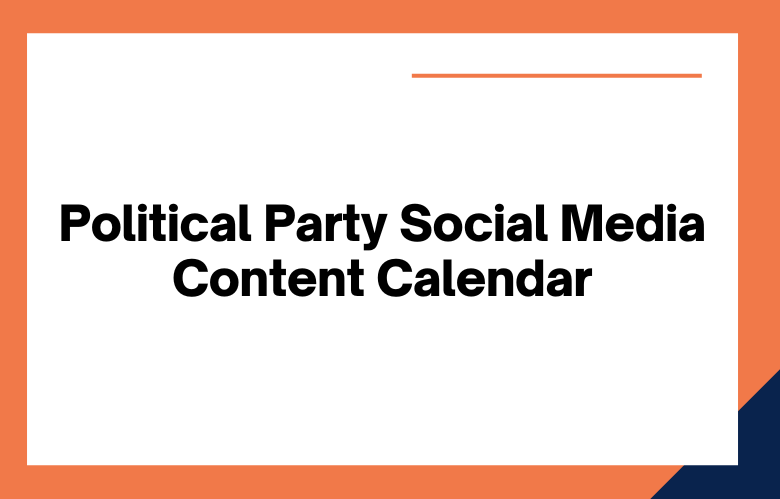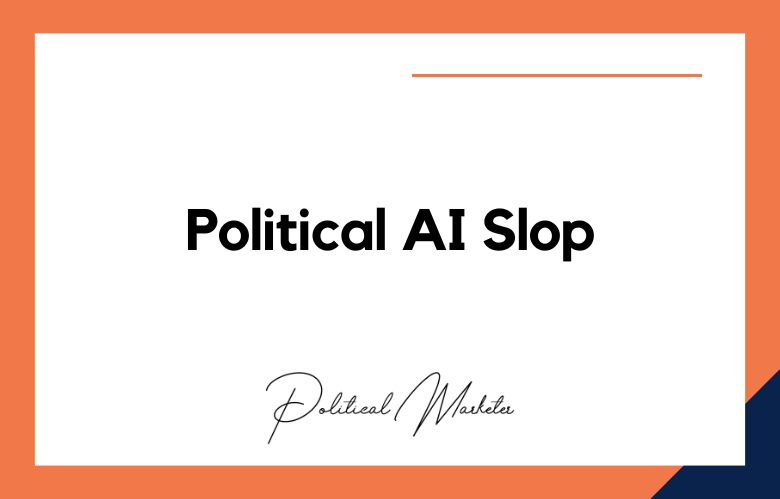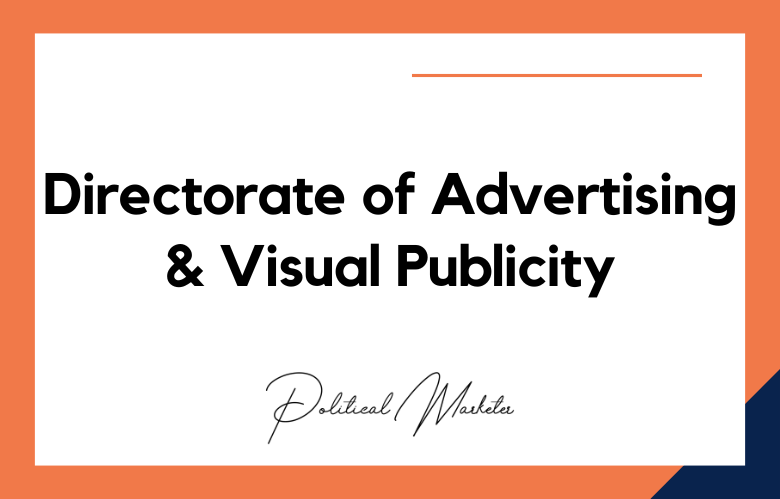If you’re like most political parties, you’re always looking for new and innovative ways to reach out to voters and get your message out there. One of the best ways to do that is through social media.
But your social media accounts can quickly become cluttered and disorganized if you’re not proactive about it.
That’s why it’s essential to create a content calendar. A content calendar will help you plan your posts, ensuring your Twitter, Facebook, and Instagram accounts are constantly up-to-date. Not sure how to create one? Don’t worry – we’ve got you covered!
How to Create a Political Party Social Media Content Calendar
We’ll walk you through creating a political party social media content calendar.
Are you looking to create a Political Party social media content calendar but unsure where to start? Don’t worry!
We will outline all the steps you need to take to get started.
From figuring out your goals and target audience to creating content themes and scheduling your posts, we’ll help you every step.
So read on for all the info you need to jumpstart your Political Party social media strategy!
Are you thinking of starting a political party? Or maybe you already have one, but you’re looking for ways to amp up your social media presence. If so, creating a content calendar is a great way to stay organized and ensure your message gets out there.
Here are some tips for creating a political party social media content calendar:
- Decide on which platform you get to focus on. Trying to be active on every social media platform is unrealistic. Choose the ones that make the most sense for your target audience and focus your efforts there.
- Come up with a posting strategy. Decide how often you want to post and what type of content you want to share
- Decide what kind of content you want to produce.
- Choose the platforms you want to use.
- Create a schedule and stick to it.
- Engage with your audience and encourage them to participate in the political process.
Are you thinking of starting a political party? You’ll need to ensure you have a solid social media presence. Creating a content calendar is a great way to ensure your party’s message is shared regularly and engagingly. Here are some tips for creating a political party social media content calendar:
Pick a platform:
Which social media platforms will you use to share your party’s message? Make sure you choose platforms that your target audience is using. Once you’ve chosen your venue, it’s time to start creating content. What kind of posts will you share? Be sure to mix things up – positions include videos, images, infographics, quotes, and more.
Are you thinking about starting a political party? Or maybe you’re already involved in one and want to step up your social media game. Either way, creating a content calendar is a great way to organize and ensure the right people see your party’s message.
Choose the platforms you’ll use. Will you focus on Facebook, Twitter, or Instagram? Or all three? Decide which platforms will work best for reaching your target audience.
Schedule regular posts. Once you know which platforms you’ll be using, it’s time to start scheduling your content.
Are you looking to get your political party’s message on social media? Creating a content calendar can help you stay organized and ensure you’re hitting all the key topics. Here’s how to get started:
Start by brainstorming the themes and topics you want to cover in your content. Then, create a rough schedule of when you wish to post on each case. Make sure to leave some flexibility in your program if something unexpected arises.
Once you have a general idea of what you want to post and start creating your content, keep your audience in mind as you craft your posts, and try mixing them up to keep them engaged.
Are you thinking about starting a political party? Or are you already the leader of a small party looking to make a significant impact? Social media is one of the ways to get your message out.
But creating compelling content for social media can be a challenge. We’ve compiled this guide on creating a political party social media content calendar.
You’ll be able to easily plan and produce content that will help grow your party and engage potential supporters.
Best Practices for Political Party Social Media Content Calendar
- Establish a content calendar
- Draft posts ahead of time
- Stick to a regular posting schedule
- Use a mix of images, videos, and text posts
- Keep your tone of voice consistent
- Tag other politicians or organizations in your posts
- Respond to comments and questions quickly
- Use hashtags to increase exposure
- Plan your content calendar in advance
- Keep your tone of voice professional
- Write exciting and engaging posts
- Use images and videos to break up your text
- Share news and articles from reputable sources
- Engage with followers and commenters
- Repost popular content from other pages
- Monitor your analytics to see what’s working
- Introduce yourself and your campaign
- Share your platform and policies
- Highlight your supporters and volunteers
- Share funny or interesting content related to your campaign
- Promote events and rallies
- Respond to comments and questions from followers
- Thank people for their support
- Plan your content calendar at least three months in advance
- different Draft types of posts, including images, videos, and gifs
- Keep your tone of voice consistent across all platforms
- Research the latest news and trends in politics
- Create exciting and engaging content that will capture people’s attention
- Schedule posts ahead of time using a tool like Hootsuite or Buffer
- Respond to comments and questions as quickly as possible
- Monitor your analytics to see which posts are performing the best
- Identify critical dates and events to promote
- Create content that is relevant to your audience
- Make sure all graphics are high quality and visually appealing
- Keep posts short and sweet- no one has time to read a novel on social media!
- Use hashtags to increase reach
- Schedule posts ahead of time for maximum impact
- Monitor comments and respond promptly
- Create a social media content calendar
- Decide on your campaign’s key messages
- Identify your target audience
- Find relevant and exciting content to share
- Schedule posts ahead of time
- Respond to comments and questions promptly
- Analyze your social media analytics to see what works and what needs improvement.
Conclusion
Creating a social media content calendar for your political party is essential in ensuring you put your best foot forward online. By planning and strategizing, you can ensure you share the right content at the right time to reach the most people.
Contact us if you need help creating or implementing a social media strategy for your political party.
Our experts have experience helping candidates and organizations achieve their goals online.
We would be happy to chat about how we could help get your message out!
How to Create a Political Party Social Media Content Calendar: FAQs
What Does a Political Campaign Strategist Do?
A strategist plans, coordinates, and oversees a political campaign’s overall direction, messaging, media strategy, data use, and voter outreach.
What Skills Are Essential for a Political Campaign Strategist?
Critical thinking, data analysis, communication, crisis management, leadership, media planning, and an understanding of voter psychology are key skills.
How Does a Strategist Shape a Candidate’s Public Image?
Strategists help craft narratives, advise on public appearances, manage media training, and ensure consistent messaging across platforms.
What Role Does Data Play in a Strategist’s Daily Work?
Strategists rely on polling, voter files, social media analytics, and predictive modeling to inform decisions on targeting and messaging.
How Early Does a Strategist Get Involved in a Campaign?
They are often involved from the pre-announcement phase, helping define positioning, strategy, budget, and team structure.
Is the Job of a Political Strategist Limited to Elections?
No, strategists also work on policy advocacy, reputation management, crisis response, and long-term brand building between elections.
What Is the Difference Between a Political Strategist and a Campaign Manager?
A strategist focuses on high-level planning and message architecture, while a campaign manager handles day-to-day execution and logistics.
Do Strategists Work for Parties or Individual Candidates?
Both. Some strategists are party-affiliated, while others are hired directly by candidates, PACs, or independent organizations.
How Does a Strategist Handle a Scandal or Crisis?
They assess the damage, develop a response plan, craft key messages, and manage media narratives to protect or rebuild the candidate’s image.
What Role Do Strategists Play in Debate Preparation?
They research opponents, craft talking points, simulate debates, and train the candidate to stay on message and handle tough questions.
Can Strategists Influence Policy Positions?
Yes, they often recommend policies that resonate with target voter groups or help reposition the candidate around popular issues.
What Tools and Platforms Do Campaign Strategists Use?
They use polling software, CRM systems, media monitoring tools, social listening platforms, and ad management dashboards.
Do Political Strategists Work Alone or in Teams?
They work within a broader team that includes media advisors, data analysts, speechwriters, and grassroots organizers.
Is Campaign Strategy the Same in Local and National Elections?
While core principles apply everywhere, strategies are tailored based on scale, budget, media reach, and voter diversity.
How Do Strategists Manage Opponent Research?
They oversee background research, track public statements, analyze voting records, and identify vulnerabilities for contrast messaging.
What Is a Day in the Life of a Political Strategist Like?
It involves rapid decision-making, message testing, data review, team meetings, media coordination, and adapting to breaking news.
How Do Strategists Stay Updated on Public Sentiment?
They monitor polls, social media trends, news cycles, grassroots reports, and use AI tools for real-time sentiment analysis.
Are Strategists Responsible for Political Advertisements?
Yes, they guide the ad strategy, creative direction, budget allocation, and message alignment across platforms.
What Challenges Do Political Strategists Commonly Face?
Challenges include misinformation, last-minute crises, budget constraints, internal conflicts, and unpredictable voter shifts.
How Can Someone Become a Political Campaign Strategist?
Most start in grassroots roles or media, gain experience in data and communication, and build networks within political circles.
One way to get in touch is by filling out our online form on this site or give us a call at
+91 9848321284. Let’s work together today!











